| Weight | 1 lbs |
|---|---|
| Dimensions | 9 × 5 × 2 in |
| host | mouse |
| isotype | IgG2b |
| clonality | monoclonal |
| concentration | concentrate, predilute |
| applications | IHC |
| reactivity | human |
| available size | 0.1 mL, 0.5 mL, 1 mL concentrated, 7 mL prediluted |
mouse anti-Chromogranin A monoclonal antibody (ZM12) 6123
Price range: $160.00 through $528.00
Antibody summary
- Mouse monoclonal to Chromogranin A
- Suitable for: Immunohistochemistry (formalin-fixed, paraffin-embedded tissues)
- Reacts with: Human
- Isotype:IgG2b
- Control: Pancreas or neuroendocrine tumor
- Visualization: Cytoplasmic
- 0.1, 0.5, 1.0 mL concentrated, 7 mL prediluted
mouse anti-Chromogranin A monoclonal antibody ZM12 6123
| target relevance |
|---|
| Protein names Chromogranin-A (CgA) (Pituitary secretory protein I) (SP-I) [Cleaved into: Vasostatin-1 (Vasostatin I); Vasostatin-2 (Vasostatin II); EA-92; ES-43; Pancreastatin; SS-18; WA-8; WE-14; LF-19; Catestatin (SL21); AL-11; GV-19; GR-44; ER-37; GE-25; Serpinin-RRG; Serpinin; p-Glu serpinin precursor] |
| Gene names CHGA,CHGA |
| Protein family Chromogranin/secretogranin protein family |
| Mass 50688Da |
| Function FUNCTION: [Pancreastatin]: Strongly inhibits glucose induced insulin release from the pancreas.; FUNCTION: [Catestatin]: Inhibits catecholamine release from chromaffin cells and noradrenergic neurons by acting as a non-competitive nicotinic cholinergic antagonist (PubMed:15326220). Displays antibacterial activity against Gram-positive bacteria S.aureus and M.luteus, and Gram-negative bacteria E.coli and P.aeruginosa (PubMed:15723172, PubMed:24723458). Can induce mast cell migration, degranulation and production of cytokines and chemokines (PubMed:21214543). Acts as a potent scavenger of free radicals in vitro (PubMed:24723458). May play a role in the regulation of cardiac function and blood pressure (PubMed:18541522). {ECO:0000269|PubMed:15326220, ECO:0000269|PubMed:15723172, ECO:0000269|PubMed:21214543, ECO:0000269|PubMed:24723458, ECO:0000303|PubMed:18541522}.; FUNCTION: [Serpinin]: Regulates granule biogenesis in endocrine cells by up-regulating the transcription of protease nexin 1 (SERPINE2) via a cAMP-PKA-SP1 pathway. This leads to inhibition of granule protein degradation in the Golgi complex which in turn promotes granule formation. {ECO:0000250|UniProtKB:P26339}. |
| Subellular location SUBCELLULAR LOCATION: [Serpinin]: Secreted {ECO:0000250|UniProtKB:P26339}. Cytoplasmic vesicle, secretory vesicle {ECO:0000250|UniProtKB:P26339}. Note=Pyroglutaminated serpinin localizes to secretory vesicle. {ECO:0000250|UniProtKB:P26339}.; SUBCELLULAR LOCATION: Cytoplasmic vesicle, secretory vesicle {ECO:0000250|UniProtKB:P10354}. Cytoplasmic vesicle, secretory vesicle, neuronal dense core vesicle {ECO:0000250|UniProtKB:P10354}. Secreted {ECO:0000269|PubMed:25326458, ECO:0000269|PubMed:37453717}. Note=Associated with the secretory granule membrane through direct interaction to SCG3 that in turn binds to cholesterol-enriched lipid rafts in intragranular conditions. In pituitary gonadotropes, located in large secretory granules. {ECO:0000250|UniProtKB:P10354}. |
| Tissues TISSUE SPECIFICITY: Detected in cerebrospinal fluid (at protein level) (PubMed:25326458). Detected in urine (at protein level) (PubMed:37453717). {ECO:0000269|PubMed:25326458, ECO:0000269|PubMed:37453717}.; TISSUE SPECIFICITY: [GE-25]: Found in the brain. {ECO:0000269|PubMed:7535395}. |
| Structure SUBUNIT: Self-interacts; self-assembly is promoted in vitro by chondroitin sulfate attachment which occurs at mildly acidic pH conditions (PubMed:25326458). Interacts with SCG3 (By similarity). Interacts with ITPR1 in the secretory granules (By similarity). {ECO:0000250|UniProtKB:P05059, ECO:0000250|UniProtKB:P26339, ECO:0000269|PubMed:25326458}. |
| Post-translational modification PTM: Sulfated on tyrosine residues and/or contains sulfated glycans.; PTM: O-glycosylated with core 1 or possibly core 8 glycans (PubMed:19838169, PubMed:23234360, PubMed:9852066). Contains chondroitin sulfate (CS); CS attachment is pH-dependent, being observed at mildly acidic conditions of pH 5 but not at neutral pH, and promotes self-assembly in vitro (PubMed:25326458). {ECO:0000269|PubMed:19838169, ECO:0000269|PubMed:23234360, ECO:0000269|PubMed:25326458, ECO:0000269|PubMed:9852066}.; PTM: Proteolytic processing gives rise to an additional longer form of catestatin (residues 358-390) which displays a less potent catecholamine release-inhibitory activity (PubMed:10781584). Plasmin-mediated proteolytic processing can give rise to additional shorter and longer forms of catestatin peptides (PubMed:17991725). {ECO:0000269|PubMed:10781584, ECO:0000269|PubMed:17991725}. |
| Target Relevance information above includes information from UniProt accession: P10645 |
| The UniProt Consortium |
Data
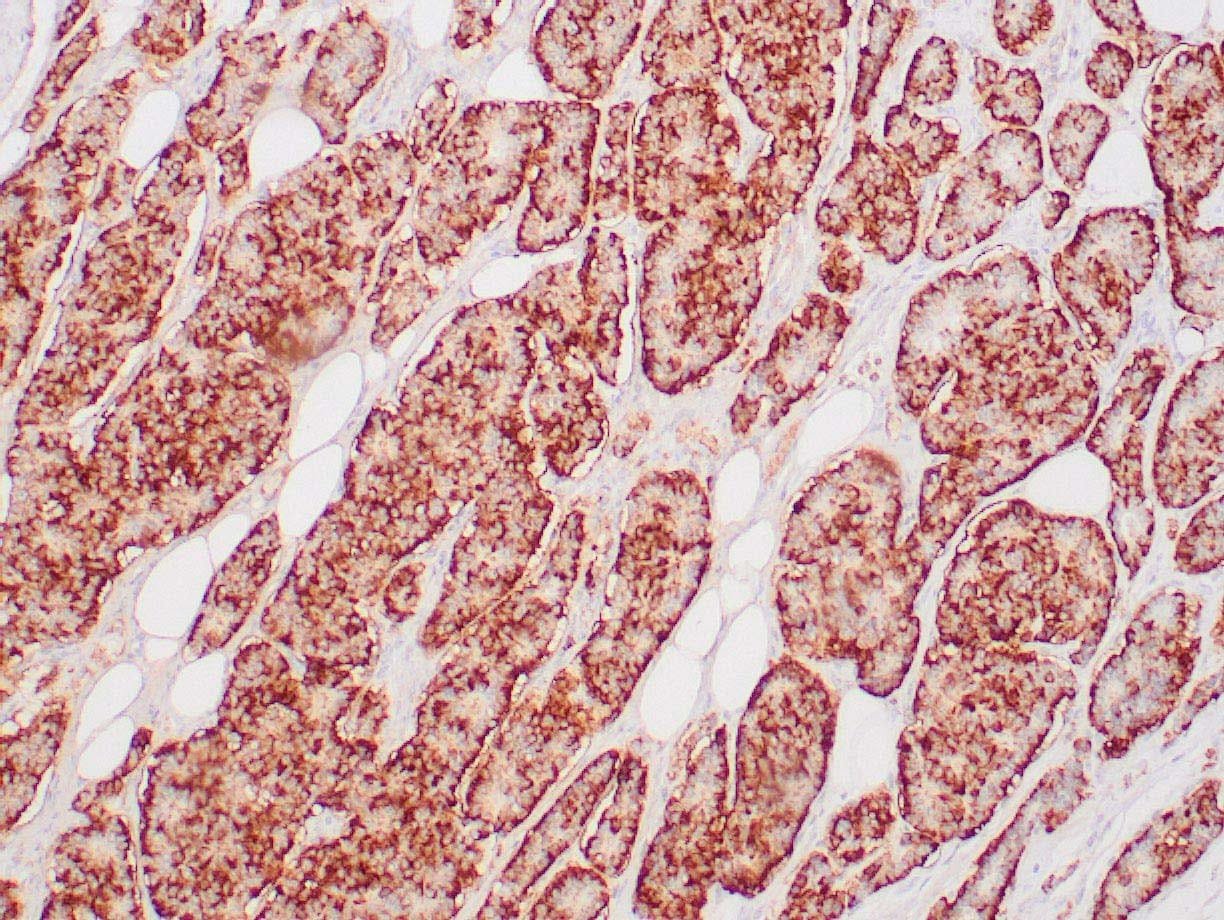 |
| Human neuroendocrine tumor stained with anti-Chromogranin A antibody using peroxidase-conjugate and DAB chromogen. Note cytoplasmic tumor cells. |
Publications
| pmid | title | authors | citation |
|---|---|---|---|
| We haven't added any publications to our database yet. | |||
Protocols
| relevant to this product |
|---|
| IHC |
Documents
| # | SDS | Certificate | |
|---|---|---|---|
| Please enter your product and batch number here to retrieve product datasheet, SDS, and QC information. | |||
Only logged in customers who have purchased this product may leave a review.
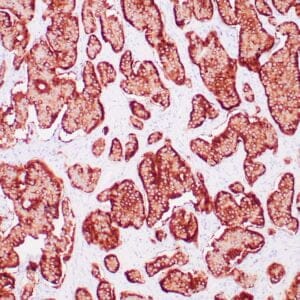
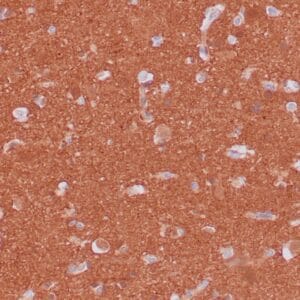
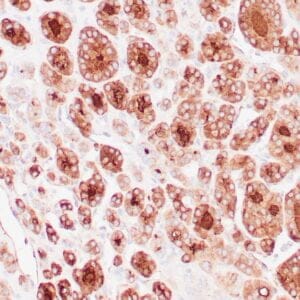
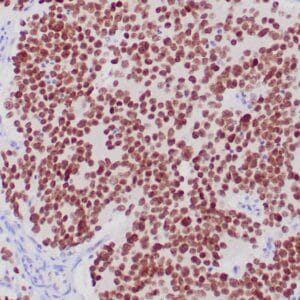
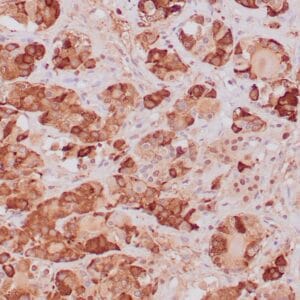
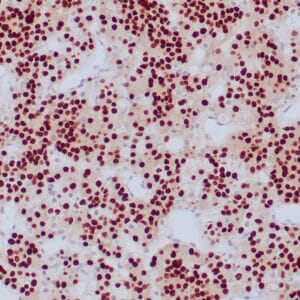

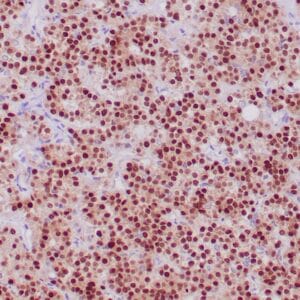
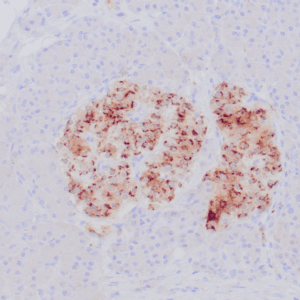
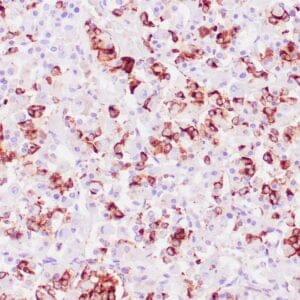

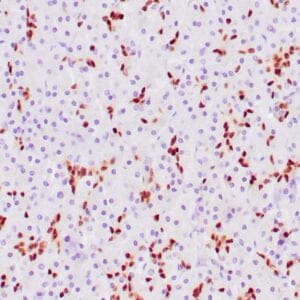
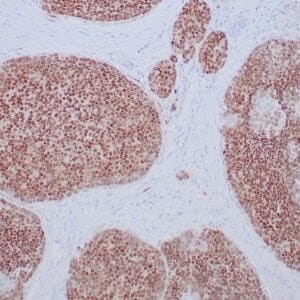
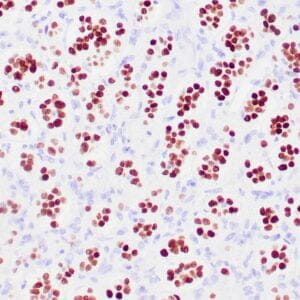
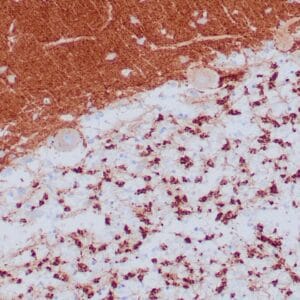
Reviews
There are no reviews yet.